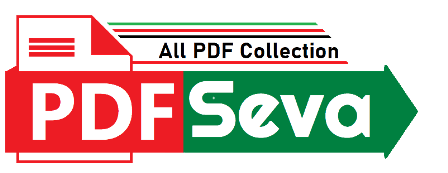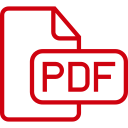
ad here
855 Download
1 year ago
Control engineering is a multi-disciplinary engineering discipline that focuses on designing control systems and equipment with desired behaviors in control environments. It is often taught alongside electrical engineering and mechanical engineering at institutions worldwide. Control engineering uses sensors and detectors to measure output performance, providing corrective feedback to achieve desired performance. Automatic control systems, such as cruise control, operate without human input. Control engineering is a subfield of electrical engineering and uses mathematical modeling, analysis, and controller design to understand and implement control systems in various domains.
Control engineering has applications in various industries, including commercial airliners, cruise control, and automobiles. Feedback is typically used in control engineering, such as using PID controllers to adjust motor torque and monitor vehicle speed. Open loop control, where systems run without feedback, is another approach.
Control engineering is a field that is taught as part of the undergraduate curriculum in chemical engineering programs and employs similar principles to control engineering. It has diversified applications in science, finance management, and human behavior. Students can start with a linear control system course, which requires a background in elementary mathematics and Laplace transform. A control engineer’s career starts with a bachelor’s degree and can continue through the college process.
They typically work in technical managing, leading interdisciplinary projects in aerospace, manufacturing, automobile, power, and government agencies. Control engineers can earn up to $96k annually from companies like Lockheed Martin Corp and General Motors Corporation. It has applications in life sciences, computer engineering, sociology, and operations research. Courses in control engineering are primarily taught in electrical engineering and mechanical engineering, but some courses can be instructed in mechatronics engineering, aerospace engineering, or computer science. The Z-transform is the equivalent of Laplace transform in the discrete domain. Today, control systems consist of both digital and analog components, with digital components mapped into the continuous domain and design carried out in the continuous domain. The design technique has evolved from manual to computer-aided design and computer-automated design (CAD) using evolutionary computation. Resilient control systems address multiple types of unexpected disturbances, adapting and transforming control system behaviors in response to malicious actors, abnormal failure modes, and human action.
Automatic control systems have been developed over two thousand years ago, with the first feedback control device believed to be Ktesibios’s water clock in Alexandria, Egypt, around the third century BCE. This device regulated water levels and flow in a vessel, and was successful until the Mongols captured Baghdad in 1258 CE. Over the centuries, automatic devices have been used for various purposes, including open-loop control and closed-loop control. James Clerk Maxwell’s 1868 paper “On Governors” demonstrated the importance of mathematical models and methods in understanding complex phenomena. Control methodology has contributed to space travel, communication satellites, safer aircraft, cleaner automobile engines, and more efficient chemical processes. Control engineering was initially practiced as a part of mechanical engineering and electrical engineering, as electrical circuits can be easily described using control theory techniques. Control systems can range from compact controllers with dedicated software to distributed control systems for industrial process control. Fuzzy logic is an attempt to apply the easy design of logic controllers to control complex continuously varying systems, allowing measurements to be partly true. Fuzzy logic is an electronic technology that uses natural language rules translated into fuzzy logic. It is used in linear control systems, which are control systems and control theory based on negative feedback. These systems can be simple on-off control systems, such as bi-metallic domestic thermostats or air compressors. Logic controllers can respond to switches and sensors, causing machinery to start and stop various operations through actuators.
PLC software can be written in various ways, such as ladder diagrams, sequential function charts, or statement lists. Fuzzy logic can provide scalability for large control systems where conventional methods become unwieldy or costly to derive.
This book introduces students to the fundamentals of Control Systems Engineering, divided into seven chapters: Introduction to Control Systems, Laplace Transform Review and Systems Representation, Physical Systems and Control Systems Modeling, Time Domain Analysis, Stability and Steady-State Error, Root Locus, and Frequency Response Analysis. It also discusses control system applications and test signals used to analyze performance. Chapter 2 discusses the need to understand mathematics, including differential equations and Laplace Transform, and explains a simple method using Laplace Transform Table. The book also covers a State-space approach and MATLAB for solving related problems.
Chapter 3 explains modeling several systems, including electrical, mechanical, and a combination of both systems. The methods can be used to determine models for other systems in certain cases. Chapter 4 discusses time-domain analysis for analyzing system performance, while Chapter 5 discusses stability and steady-state error analysis. Examples of MATLAB simulations are provided for both stability and steady-state error analysis. Chapter 6 focuses on the Root Locus Method, which helps analyze control system performance. Root Locus graphical methods provide a direct portrayal of system performance, particularly transient response. Techniques for drawing root locus are discussed, including rules and MATLAB simulation examples. Chapter 7 covers frequency response techniques, which are more effective than time responses for modeling physical systems in the laboratory. The book focuses on the Bode Diagram technique, which uses logarithm values for magnitude and phase plots.
| PDF Name: | Control-Systems-Engineering |
| Author : | Pdf Plus |
| File Size : | 5 MB |
| PDF View : | 46 Total |
| Downloads : | 📥 Free Downloads |
| Details : | Free PDF for Best High Quality Control-Systems-Engineering to Personalize Your Phone. |
| File Info: | This Page PDF Free Download, View, Read Online And Download / Print This File File At PDFSeva.com |
Copyright/DMCA: We DO NOT own any copyrights of this PDF File. This Control Systems Engineering PDF Free Download was either uploaded by our users @Pdf Plus or it must be readily available on various places on public domains and in fair use format. as FREE download. Use For education proposal. If you want this Control Systems Engineering to be removed or if it is copyright infringement, do drop us an email at [email protected] and this will be taken down within 24 hours!
© PDFSeva.com : Official PDF Site : All rights reserved
